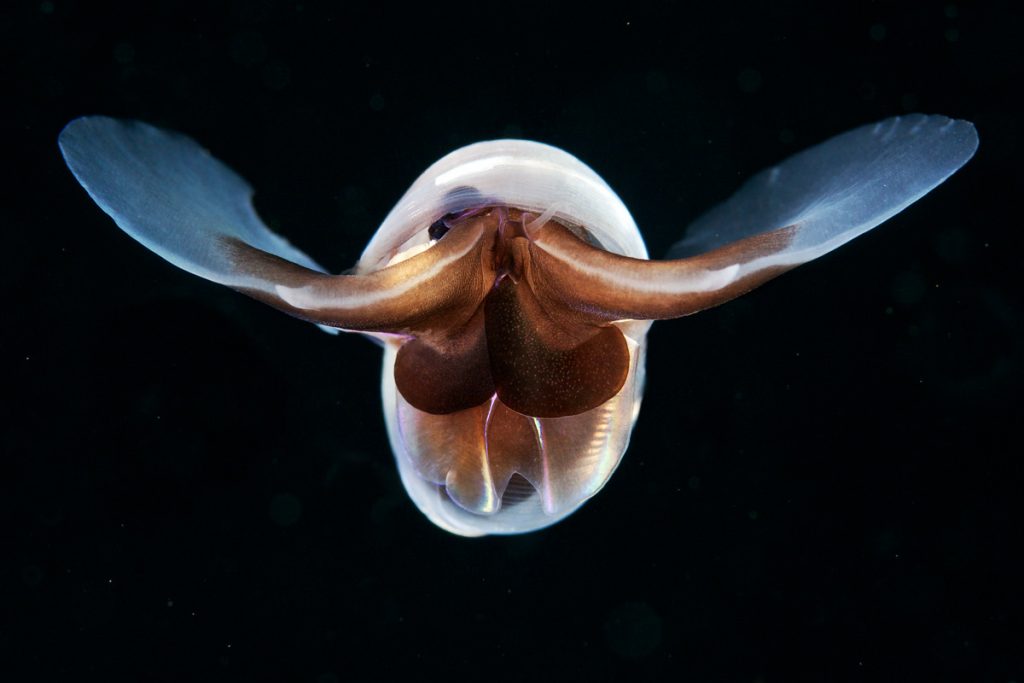Aragonite minerals buffering ocean acidification
New NESSC-paper shows how aragonite minerals in the ocean help regulating the climate system.
Likely you’ve not yet heard of sea butterflies. These tiny, special creatures live in the open ocean, far from the coast. Like many other ocean animals they build a shell to protect themselves. Sea butterflies make their shells from the mineral aragonite. However, this shell is very sensitive to climate change. Many other organisms in the ocean, like mussels and oysters, also built shells yet they make their shells from the mineral calcite, another mineral that is sensitive to climate change. In a new paper, published online in Nature Communications, NESSC-researchers at Utrecht University investigated what happens with these two minerals on the seafloor, where all shells sink to eventually.

NESSC-researcher Olivier Sulpis, first author of the new paper, explains what he and his colleagues studied: “We were surprised to find calcite everywhere on the seafloor, but very little aragonite, although recent studies show that aragonite is produced in huge quantities by sea butterflies at the surface of the ocean. In this study, we have created a new computer model that simulates the seafloor and the chemical reactions that take place there. With this model for individual particles, we were able to show that aragonite dissolves a lot at the seafloor surface, before it can be buried in the marine sediments.”
As CO2 in the atmosphere increases, it causes acidification of the oceans. Because of this, the aragonite minerals, and thus the shells of sea butterflies, dissolve more easily. It also takes sea butterflies more energy to build up an shell.

Canary in the coal mine
When aragonite dissolves, it partially cancels out the acidification of the ocean, this is called a buffering effect. It means that aragonite minerals, and therefore the sea butterfly, play a very important role in regulating the climate. “Sea butterflies are seen as the canary in the coal mine. They show how far climate change has already progressed,” explains Sulpis. “In addition, the buffering effect of dissolving this mineral also has a protective effect for the calcite that manages to be preserved at the seafloor. This explains the fact that calcite grains, rather than sea butterfly aragonite shells, cover about a third of the seafloor and form the limestones that we see on land and that compose many ancient buildings. Due to acidification of the oceans, the sea butterfly makes thinner shells, and may decline in numbers. If the sea butterfly disappears completely, calcite would take over this buffer function, but this cannot continue indefinitely. That is why it is of great importance that we do something now to bring down the CO2 content in the atmosphere.”
The research was carried out by researchers from Utrecht University, Université de Liège, University of Lincoln and University of Leeds, and funded by NESSC.
Swimming sea butterfly. Video: Svenja Halfter
Article:
Aragonite dissolution protects calcite at the seafloor
Nature Communications, 13, 1104, (2022)
Sulpis, O., Agrawal, P., Wolthers, M. et al.
doi: https://doi.org/10.1038/s41467-022-28711-z

